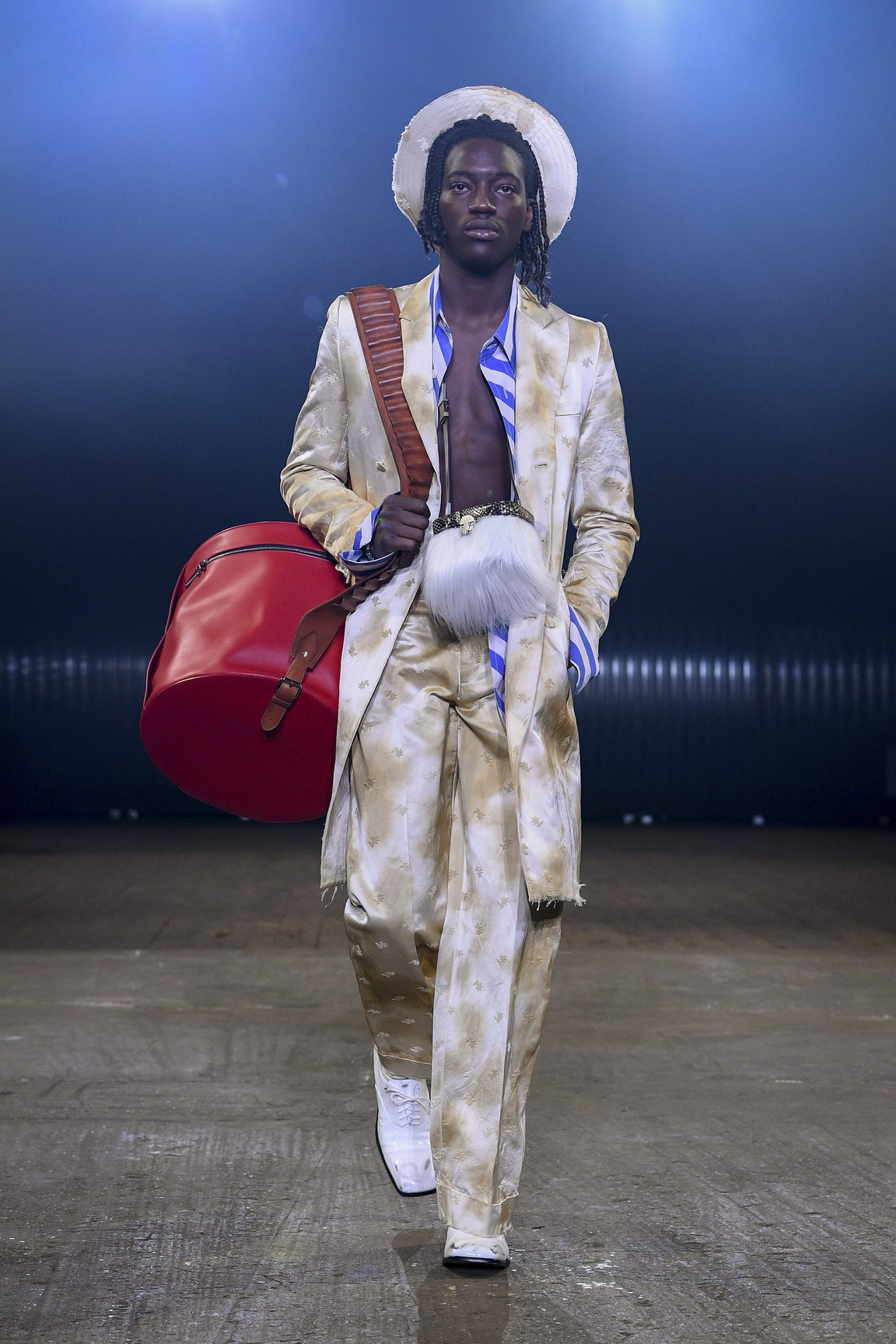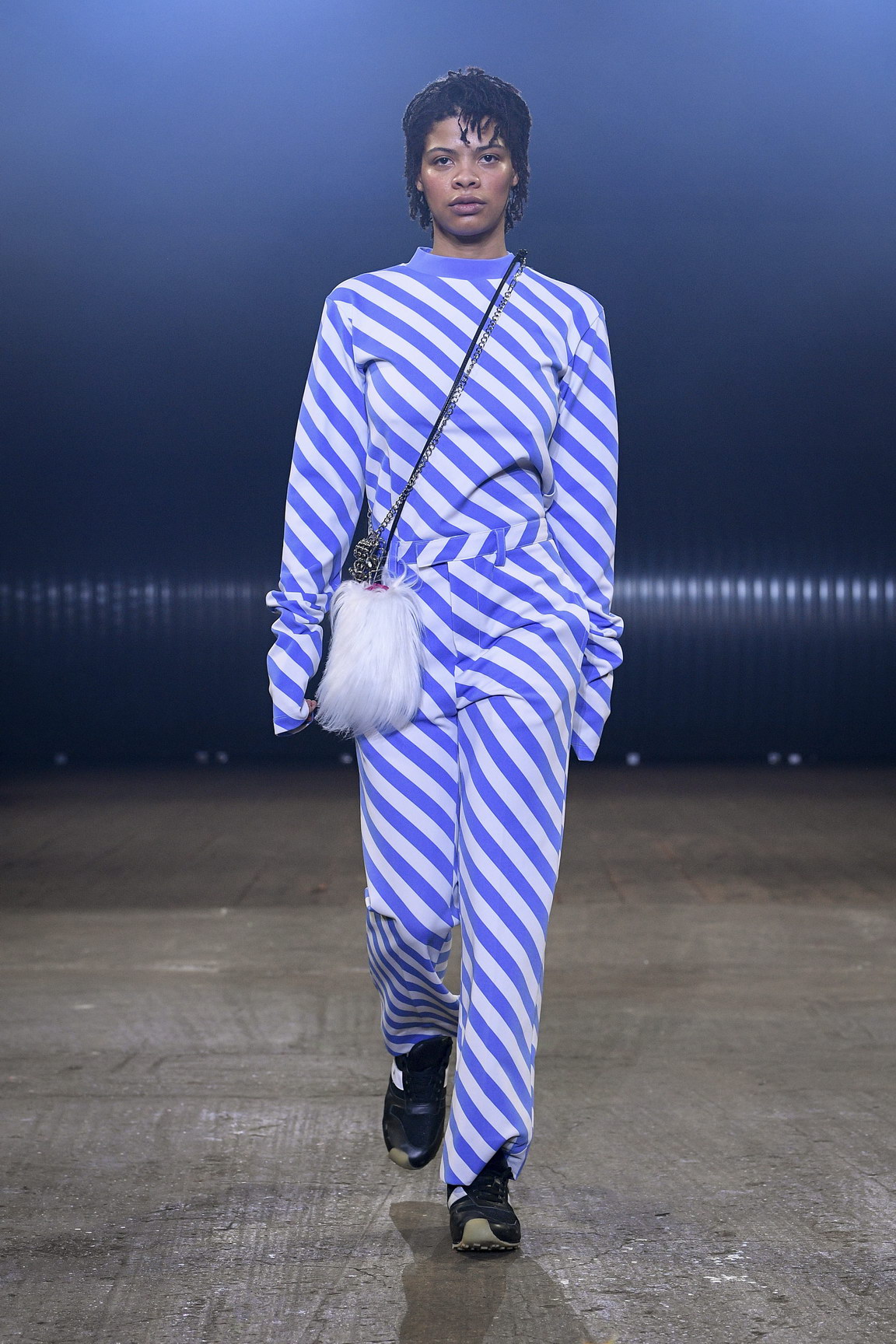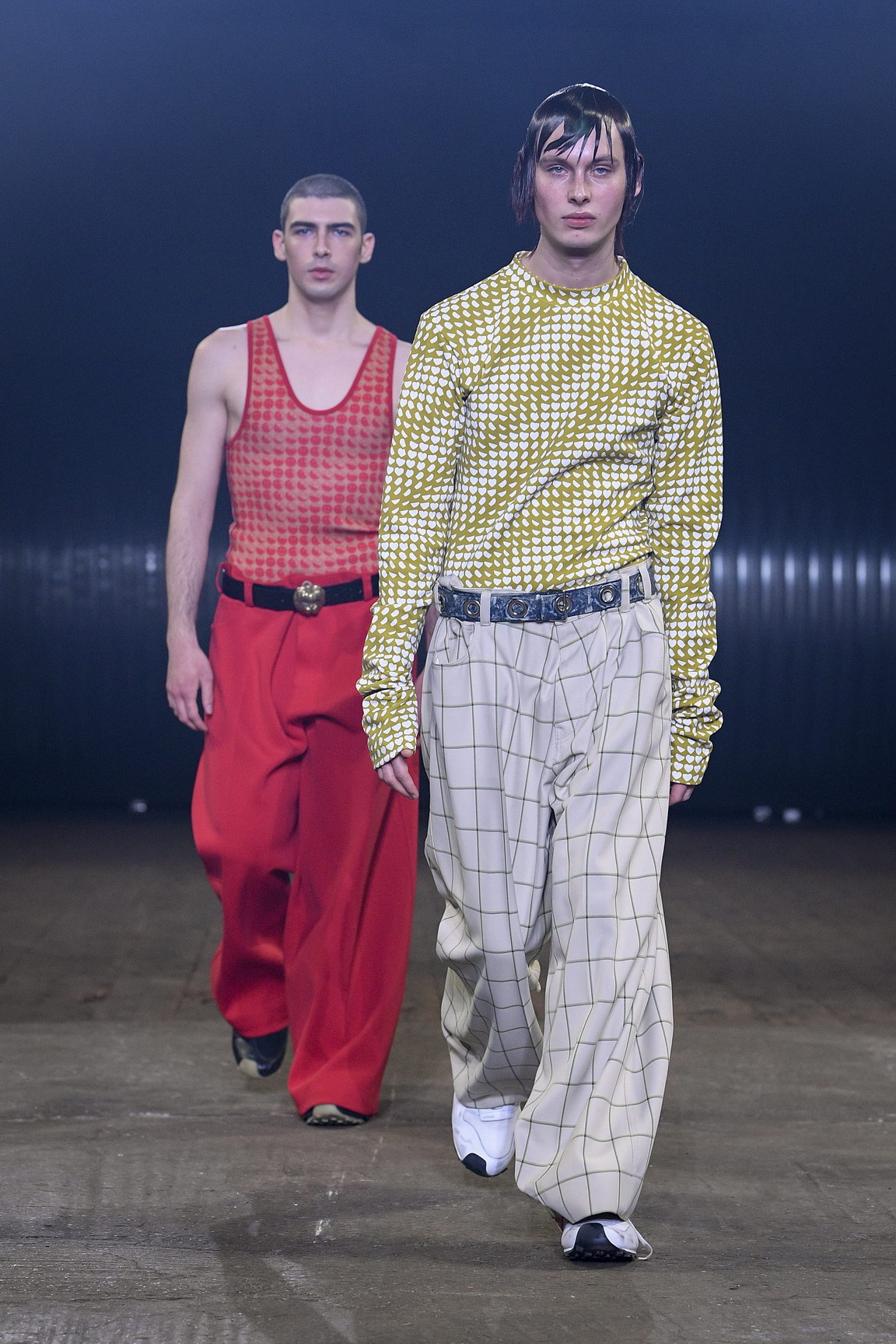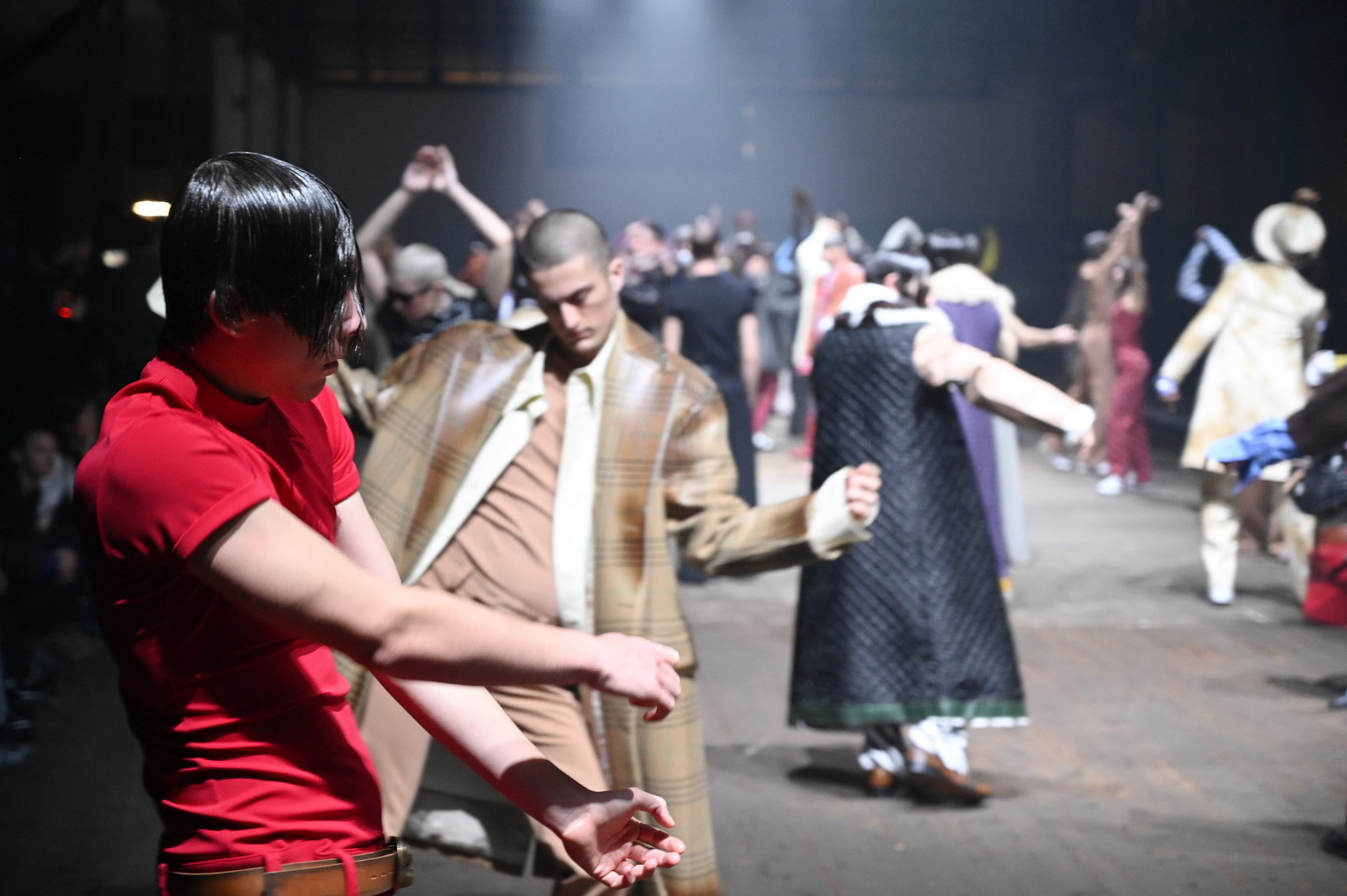Lead down tunnels of corrugated iron, a dystopian dancefloor greeted guests at Marni, upon which dancers sloped around in slow-motion in the dark. No catwalk. No seating. No lights. Just moody soundscapes and figures hidden in the shadows. The show was a collaboration between Marni’s creative director Francesco Risso and artist Michele Rizzo, whose work explores club trance dancing as a meditation on “individuality and modes of collectivism.”
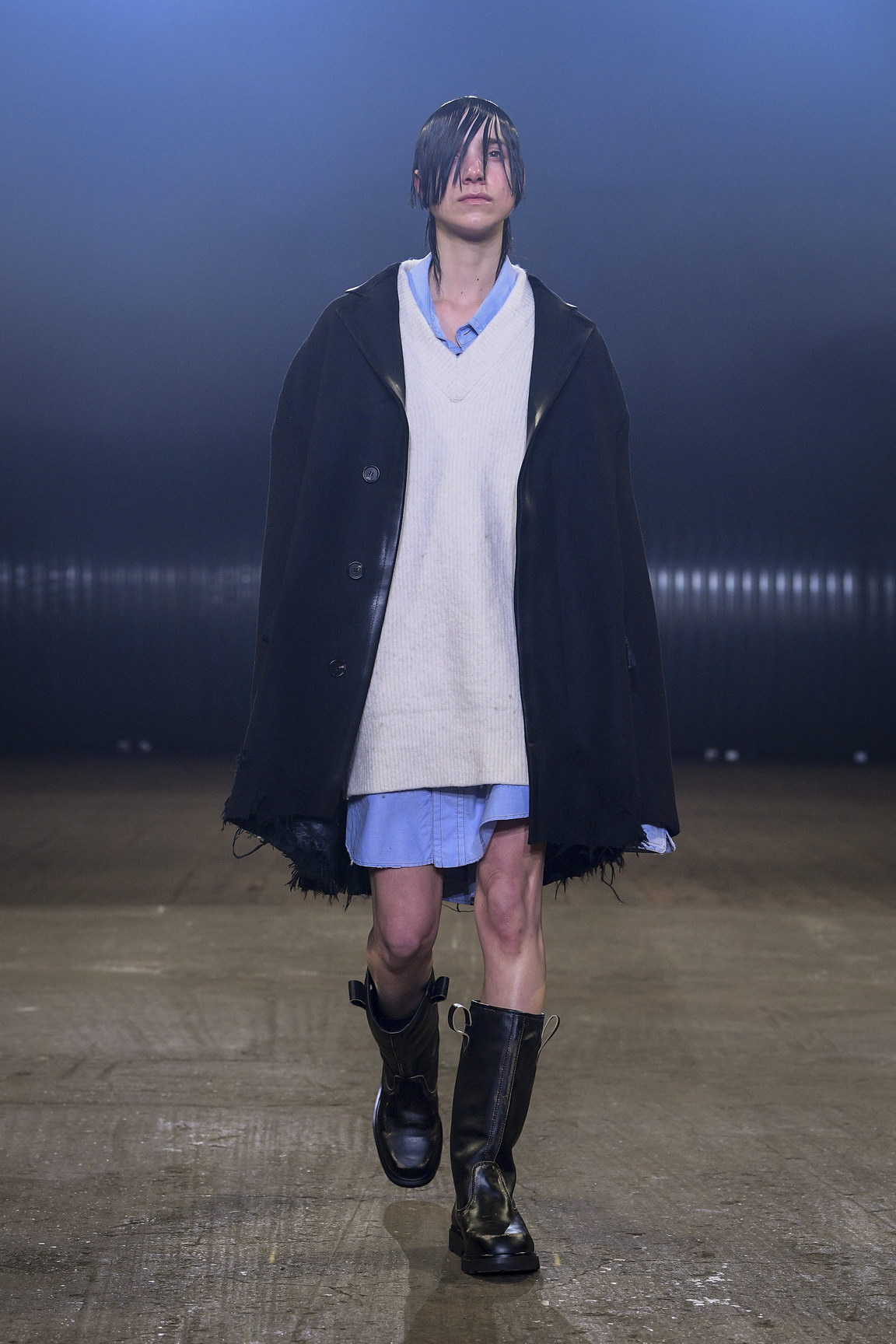
By the end of the show, the dancers were stomping around circles and circles, dancing to the death and exalting the persistent ticking of time. The performance had gusto. It left you feeling like you had seen the same clothes over and over, that your eyes were playing hypnotic tricks on you, and maybe that there were moments of beauty that you may have missed at first glance.

Francesco explained that the performance was inspired by Edgar Allan Poe’s story of Prince Prospero in The Masque of the Red Plague. It tells the tale a prince who avoids a plague by hiding away in his abbey and staging a masquerade ball. “This was our court of Prospero dancing to the end of love until some blitz of life swipes away the concept of fashion,” he said … Bold words for a fashion designer. Then again, Francesco is one of the vanguard visionaries in Italy championing upcycling and sustainability.

Much of his AW20 collection, which he described as “a multi-form uniform, neutral and graphic”, was made from deadstock materials from the 50s, darned with satin and leather or hand-painted to create “hybrids of the past”. Whereas most upcycled fashion at least attempts to appear clean and new, many of these pieces were intentionally left dog-eared and tattered as though they had been yanked straight out of landfill or left dormant in a moth-infested wardrobe for decades.
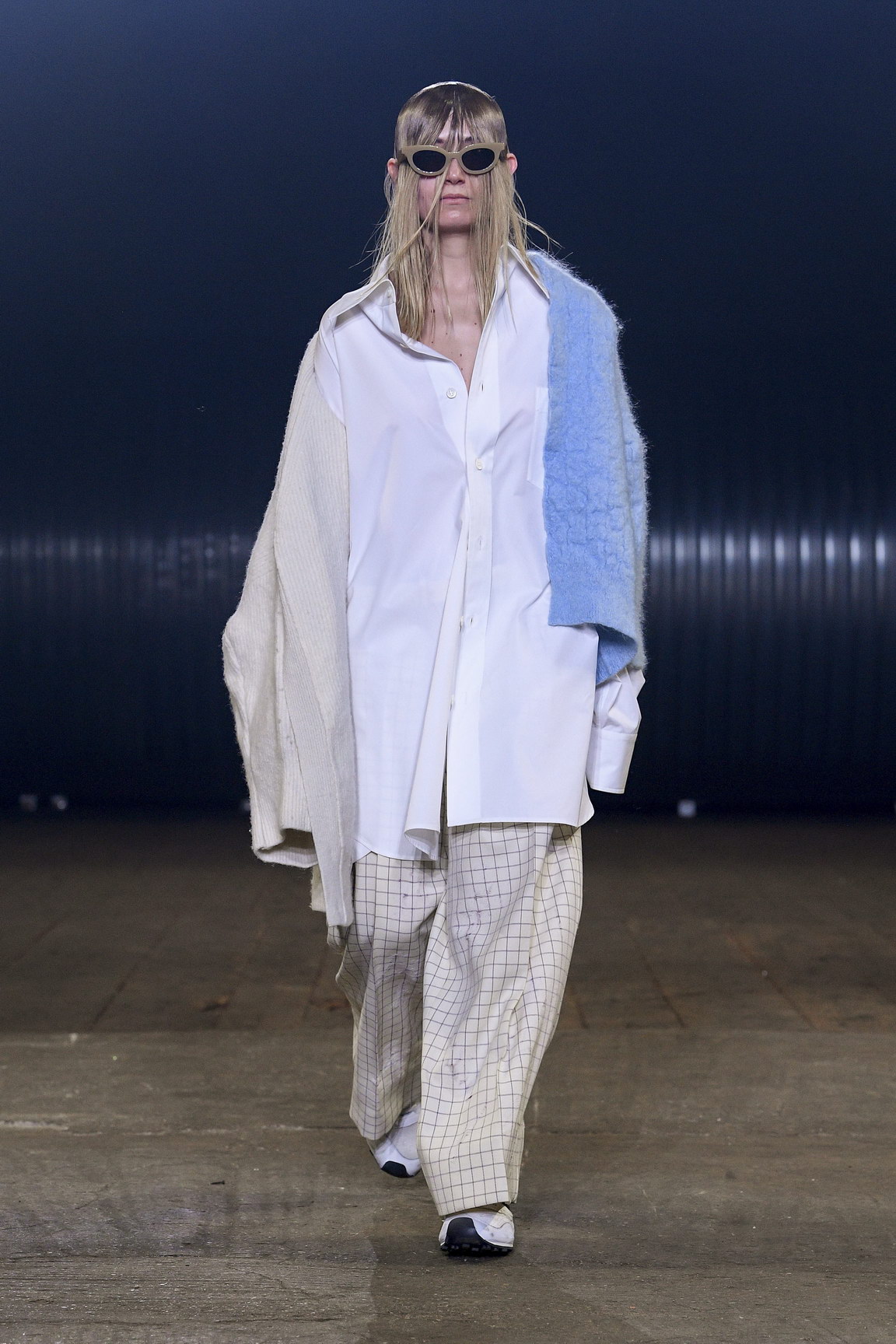
“It was about finding the beauty of the persistence of memory and the leftovers,” he explained. “Almost like the anthology of an object that has had a life.” So the clothes were deliberately out of proportion — some were too long, too wide, too narrow. They looked great as a colourful crowd, even better with the dancers’ varying pace of movement. The key takeaway was that everything old is new again; that second-hand clothes are the future.

But who knows how long those dancers had been there for — perhaps an eternity? Maybe they were actually ghosts? Alan Poe’s story ends with everyone at Prospero’s ball dead. It’s an allegory about the inevitability of death. The most obvious conclusion would be that this is one for the inevitability of death for our planet. Francesco, for one, seemed upbeat. “This was just a dance that takes us to the end and beginning of love, not death,” he insisted. “It’s entering a movement that allows you to be a propeller.”

